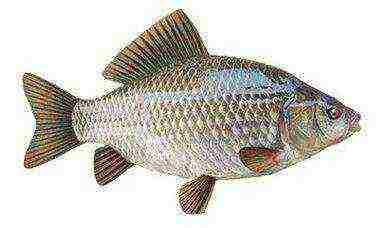Content
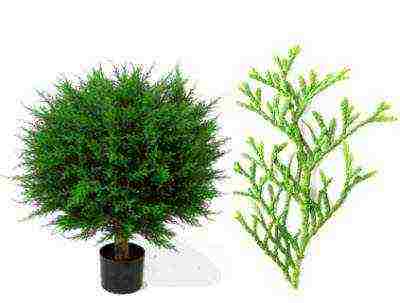 Tuya or Tuya (Thuja, Tree of Life, Northern Cypress) from the Cypress family (Cupressaceae) includes 4 species of gymnosperms evergreen coniferous shrubs and low-growing trees. In our country, it is widely used as a hedge along fenced areas, and is also often used to form landscape design, to decorate alpine slides and rockeries. But some indoor plant lovers grow thuja at home, the care of which does not require special knowledge and skills. A photo of a room thuja in a pot and tips for home care for a coniferous tree can be found further in this material.
Tuya or Tuya (Thuja, Tree of Life, Northern Cypress) from the Cypress family (Cupressaceae) includes 4 species of gymnosperms evergreen coniferous shrubs and low-growing trees. In our country, it is widely used as a hedge along fenced areas, and is also often used to form landscape design, to decorate alpine slides and rockeries. But some indoor plant lovers grow thuja at home, the care of which does not require special knowledge and skills. A photo of a room thuja in a pot and tips for home care for a coniferous tree can be found further in this material.
Regular formative pruning can change the appearance of the tree. Despite the fact that thuja belongs to conifers, the crown is formed not by needles on the branches, but by opposite scaly leaves, consisting of flat scales overlapping each other. The period of "flowering" (dusting) usually begins in the fall: a flower bud appears from the axils of the leaves on the tops of the lateral shoots, and then a "flower" blooms (a female kidney-shaped spikelet of yellowish color appears in the upper part of the crown, and a male spikelet of brownish color in the lower part) ... Then, among the scaly leaves, oval-shaped cones are formed, after which ripening seeds with narrow wings under the scales appear.
If you saw a potted thuja on the floor or on the windowsill of a dwelling, then most likely it is an Eastern Thuja (Thuja orientalis, Platycladus, Plosovetochnik, Biota). This is an evergreen shrub with spreading branches, flat scaly leaves of a silvery-variegated color and oblong cones, bent downwards. The usual shape of the eastern thuja is pyramidal, but with the help of pruning and pinching, you can give the crown the desired appearance. Some craftsmen form a tree in the form of a topiary or bonsai from a thuja in a pot. To do this, the trunk and branches must be bent and fixed almost on the verge of breaking, so that, in combination with correct pruning and timely pinching of young shoots, a very beautiful bonsai is obtained. Formed decorative coniferous thuja tree will look interesting in an ensemble with such flowering bonsai trees as indoor azalea, fuchsia, hibiscus Chinese rose.

- photo: bonsai from thuja It is necessary to make a reservation right away that the potted thuja, as specially bred by breeders of the room variety, does not exist. At home, the oriental thuja or Platovetochnik, which we mentioned above, takes root best of all. Caring for this unpretentious type of coniferous plant is very simple and an elegant dwarf tree grows at home to a miniature size. Phytodesigners create very interesting compositions of flowering houseplants against the background of evergreen thuja for interior decoration, choosing such decorative potted flowers as phalaenopsis or dendrobium orchid, tuberous begonia, Persian cyclamen, gerbera with bright daisy flowers, miniature hydrangea, New Guinea balsam, Tompérodendona ... And in gardening and for landscape design, such types of thuja as T. western, T. Korean, T. Japanese, T. folded are most suitable.
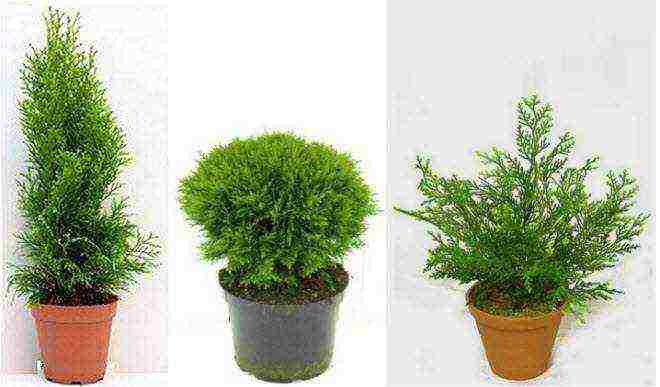
- photo: oriental thuja in a pot Interestingly, Buddhist philosophy relates thuja to plants that contribute to longevity and the restoration of vital energy.And some designers use potted threshing to symbolically organize living space in feng shui, along with houseplants such as home violets of Saintpaulia, Zamioculcas Dollar tree, Gloxinia with very bright flowers, Crassula Money tree. In addition, indoor thuja exudes a very delicate aroma, reminiscent of the pleasant smell of spruce resin, which will not leave anyone indifferent.
By the way, this coniferous plant has very effective healing properties. It is recommended to grow thuja at home for people suffering from various respiratory diseases. Along with such popular houseplants as dieffenbachia and house chrysanthemum, potted thuja enriches the space with useful essential oils and volatile secretions - phytoncides. These substances cleanse the air from pathogenic microbes, dust and calm the nervous system. The coniferous scent of thuja helps to restore emotional and physical fatigue after a hard day's work, effectively relieves stress.
Thuja extract is widely used in perfumery to create useful cosmetics, and is also used in traditional and folk medicine for the preparation of effective medicines. Funds that contain thuja extract have different healing properties (today there are tonic, antimicrobial, antineoplastic, expectorant, hemostatic, anti-inflammatory, diuretic drugs). Various decoctions and infusions are made from chopped thuja needles. There are many popular recipes for the preparation of therapeutic antiseptics against age spots, warts, papillomas, acne on the skin. Medicines with thuja extract in the composition treat adenoids in children and acute respiratory viral infections, as well as cervical erosion, cystitis, Trichomonas colpitis. Thuja can compete for the status of "the best home doctor" with such well-known indoor medicinal plants as aloe vera or centenary, medicinal Kalanchoe, Benjamin ficus, geranium pelargonium, gardenia jasmine, myrtle tree, euphorbia, primrose primrose.
► RECIPES: NASTY AND BREWS FROM TUI NEEDLES.
♦ WHAT IS IMPORTANT!Location and lighting.Direct sunlight can cause burns on the delicate scaly leaves of the thuja. At home, under the bright rays of the sun, the leaves turn yellow and fall off. It is best to place the coniferous pot in partial shade, with indirect indirect lighting during the day. You can place the pot on a floor stand next to a window on the north side of the room. If you shade the window glass on hot summer days, then the thuja will feel comfortable on a dais next to the western or eastern window.
Temperature conditions.In spring and summer, you can take home thuja out on a balcony, loggia or in a garden in a shaded place. The optimum temperature is 18-24 ° C. In winter, it is necessary to keep the thuja pot away from heating appliances; it is best to place the plant on a glazed loggia. It is desirable that in winter the temperature does not rise above 14-16 ° C.
Air humidity.Moderate or slightly increased humidity level (40-60%). If the air in the room is too dry (summer heat, the heating system is working), be sure to spray the coniferous plant from a spray bottle with warm soft water.
Watering.Use warm, settled water for irrigation. It is recommended to observe a moderate watering regime (several times a week). You should not overmoisten the soil, but drying out the soil is also detrimental to the thuja.
Dredge and top dressing.For planting a young plant, you can make an earthen mixture from coniferous soil. leafy land and coarse sand in a ratio of 2: 4: 1, and for an adult - sod land, peat and sand in a ratio of 2: 2: 1.
For feeding, you can use complex organic and mineral fertilizers for conifers (in a half dose).In the summer period, thuja most of all needs potash fertilizers, and in the spring - nitrogen fertilizers (for adult plants, you can add a little phosphorus fertilizers). You need to feed it no more than 2 times a month. No fertilization is required in winter.
Transfer.The roots of a coniferous plant are quite long. For planting thuja, choose a tall, but not very wide pot. A drainage layer of broken bricks or tiles must be poured onto the bottom of the pot. A young plant is transplanted annually, and an adult once every two years. Landing is carried out by the transshipment method together with an earthen clod.
Reproduction.It can be propagated by cuttings, layering and seeds. At home, the plant is usually propagated by cuttings. A stalk 10-12 cm long is carefully separated with a pruner or a sharp knife from an adult plant. The place of the cut on the cutting should be treated with a rooting stimulator. Then you need to deepen the cutting a few centimeters into the ground and put the container in a warm place and ventilate the room more often. Spray the cutting with a spray bottle with water instead of watering. When the cutting takes root, you can transplant it into a suitable pot.
♦ MINIATURE TOUIS FOR DECORATION OF ROCARY OR ALPINARY. PHOTO VARIETIES: 
♦ VIDEO. HOW TO CARE FOR THAT HOME:Useful tips for caring for room thuja:
Growing western thuja Danica at home:
Reproduction of thuja:
Dear friends ! Please share in the Comments your experience of growing home thuja.
INTERESTING FOR WOMEN:
Many are accustomed to seeing thuja as an element of landscaping a garden or yard. In fact, this amazing tree looks great in the house, on the balcony or loggia, on the veranda. Growing thuja at home is not so difficult, the main thing is to follow all the rules for care.
General information
Tuyu is also called the “tree of life,” the green beauty belongs to the cypress family. Includes 6 types, but in room conditions only two types can be kept:
- Eastern. Outwardly it resembles a shrub. The needles are deep green.
- Western. A small tree in the shape of a cone. The needles are dark green in color, sometimes there is a yellow tint. Quite popular, but growing for a very long time.

Thuja room
You will not find needles on the tree, the branches are covered with scaly leaves that overlap each other. In the autumn, the thuja begins to bloom, after which small cones form.
Where to place the thuja in the house, what temperature does it need
The pot with the plant should not be exposed to the sun, the rays can burn the needles. On the windowsill of the sunny side, the thuja will also not be comfortable, the leaves will begin to turn yellow and crumble. The optimal place for a plant is partial shade, diffused daylight.
You can put the thuja pot in a flower stand and place it near the window. Another option for protection from direct rays of the sun is to fit the window glass. In this case, the thuja will grow beautiful and green.
In the warm season, the thuja can be put on a balcony or loggia. Also, the pot can be taken out into the garden, but placed in the shade.

The air temperature that suits the plant is 18-25 degrees. In winter, it is recommended to keep the pot away from heating objects. The temperature in winter should not drop below 15 degrees Celsius. If the balcony is glazed, the thuja will be comfortable on it.
Water the thuja, what should be the humidity of the air
Thuja can be attributed to those plants that tolerate drought without problems. Therefore, it does not need frequent watering. On hot and dry days, the plant should be watered several times a week. Waterlogging will not be beneficial. But it is impossible to bring the earthen coma to complete drying.
For watering, use warm water, previously settled. It is forbidden to take from the crane.
During the growing season, and for a newly planted tree, watering changes somewhat. It is carried out regularly, avoiding drying out.So that there is no stagnation of water, good drainage is installed during transplantation.

The optimum air humidity for thuja is 40-60%. If the room is too stuffy, or heating objects are working, the plant should be sprayed with warm water. Do this as needed.
Top dressing and soil for thuja
The choice of soil for thuja depends on its age. For the young, a mixture is prepared, which includes:
- Coniferous land - 2 parts.
- Leafy ground - 4 parts.
- Coarse sand - 1 part.
For an adult plant, the following mixture is acceptable:
- Sod land - 2 parts.
- Peat - 2 parts.
- Sand - 1 part.
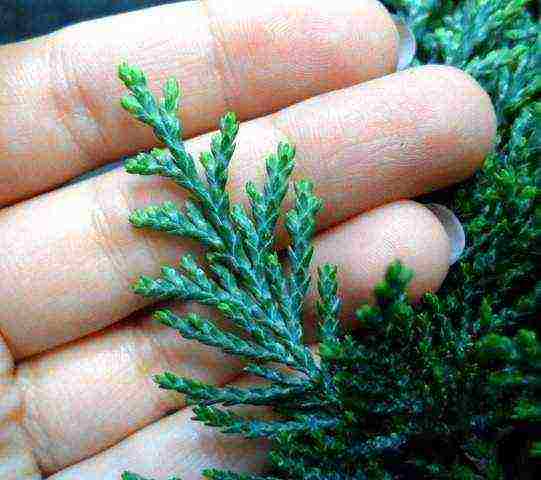
Top dressing is carried out regularly, throughout the warm period. You do not need to fertilize the plant for the winter. In summer, thuja needs potassium, and in spring, nitrogen. A little phosphorus can be added to an adult tree. Top dressing should be carried out no more than 2 times every 30 days. You can use commercial fertilizer for plants with needles, but use half as much.
We transplant
Thuja should be planted in a deep pot, but not too wide. This is because the root system of the plant is long. It is imperative to put drainage on the bottom of the slide. To do this, use broken bricks or tiles.

Thuja is transplanted carefully, without disturbing the earthen lump, transferring. A young plant should be replanted every year, an adult one every several years.
We multiply
At home, thuyu is propagated using:
- Cherenkov.
- Seed.
Breeding seeds are not used as often. Unfortunately, there is no guarantee that the seedlings will be successful. Propagating by seeds is painstaking work and a long journey.
Step-by-step instructions for seed propagation:
- In an adult and healthy plant, the cones are carefully cut off.
- Put them in a warm (and cold) place.
- After a while, the cones will open and the seeds can be removed.
- The seeds are wrapped in a cloth, which is pre-moistened with water. They are in this state for 24 hours. The fabric should be dampened as it dries.
- Take a small pot, fill it with soil, and water it. Then the seed is placed.
- It is not necessary to deepen the seeds, it is enough to sprinkle it with earth and cover with wet sawdust.
- The first shoots can be observed in 1-1.5 months.
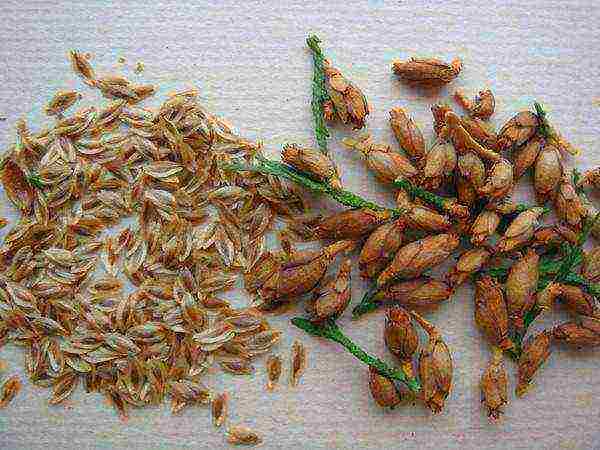
When growing thuja with seeds, the characteristics of the variety (for example, the color of the needles) may be lost.
Seeds that are ripe in the fall can be germinated by spring. For this, stratification is carried out. That is, the seeds are mixed with moistened sand and for about 90 days they should be kept in a room with a low temperature (3-5 degrees). Alternatively, put the seed box in the refrigerator or take it out to an unglazed balcony. After that, the seeds are sown into the soil, while the temperature should be about 20-23 degrees. After 2 months, sprouts will appear.
When the seeds have sprouted, favorable conditions and proper care for growth should be created:
- Moderate soil moisture.
- Diffused lighting.
The grown seedlings can be transplanted into a pot to a permanent place, they do it very carefully so as not to damage the delicate root system. Thuja will be fully formed in 3 years, or even 5 years.
Thuja is easier to propagate by cuttings than by seeds. Step-by-step instructions for propagation by cuttings:
- A stalk is carefully separated from an adult thuja. This is done with a sharp knife or pruning shears.
- The optimal cutting size is 10-12 centimeters.
- The resulting cutting is deepened by 2-3 centimeters into the soil.
- The pot of cuttings should be kept in a warm house (apartment).
- Frequent ventilation is required.
- The shoot does not need watering; it can be replaced by spraying.
- When roots appear, the plant can be taken out into the street and transplanted.
So that rooting occurs faster, the sections are recommended to be treated with a means to accelerate growth.
Interesting to know! Some growers recommend not cutting, but tearing off the stalk. Pieces of mature wood come off, which in the future contributes to rapid rooting.
Winter and summer care
Thuja needs to be taken care of regardless of the season.At the same time, the care is different at different times. In the warm season, the plant feels great on the balcony. During the growing season, frequent watering is required. On hot days, you should spray thuja in the morning and evening. They take warm water.
Winter is the dormant time of the plant, no special care is required. The temperature should fluctuate between 6-12 degrees. If the balcony and loggia are glazed, the thuja can be kept there. At a higher temperature, the thuja will dry out, and watering will not help her. It is rarely necessary to water the green beauty, and only with warm water.

In the spring, the plant is transplanted. Planting at home should be done carefully. Any damage to the root system can lead to the death of the plant. Do not add too much to the root collar - this will also destroy the thuja. Thorough watering is required after planting.
Pests and diseases
Diseases and pests in thuja grown at home can appear only as a result of improper care. One of the most common problems is the yellowness of the leaves, there are several reasons for this:
- The planting rules are violated, the root collar is exposed, or is too deep in the soil.
- Direct sunlight falls.
Found in home thuja and fungal diseases:
- Fusarium.
- Cytospore.
When infected, needles and shoots are damaged. For the treatment of thuja, specialized drugs are used. The procedures begin in the spring, and do not stop until the tree recovers.
With the onset of a dormant period, thuja can change color - this is a natural process, and there is no need to look for diseases here.

There are also known pests that pose a danger to thuja at home (in an apartment):
- Bark beetle. Holes appear in the bark of the tree.
- Shield. Harmful to bark and buds by damaging them.
- Aphid. The first signs of defeat are the needles turn yellow.
You can fight pests with insecticides.
Important! The sooner you spot a problem, the easier and faster it is to deal with. Provide the plant with proper care, and the pest will not be afraid of diseases.
What is the benefit
Thuja is not just a beautiful green plant, but also useful. It is recommended to grow it in the house, on the balcony, on the veranda for people who have problems with the respiratory tract. Thuja secretes essential oils that are very beneficial. They contribute to:
- Air purification from dust.
- Air purification from viruses.
- Calming the nervous system.
When there is a thuja in the house, depression, stress and insomnia are not terrible. The smell of pine needles soothes and pacifies. It's nice to sit on the balcony after a hard day at work and enjoy the magical scent.
Thuja extract is used for the manufacture of cosmetics and medicines. Tuyu is actively used in folk medicine.
The healing qualities of thuja:
- Has a tonic effect.
- Used as an expectorant.
- It is part of diuretics and anticancer drugs.
- It has hemostatic and antimicrobial properties.
Thuja needles are collected for the preparation of tinctures and decoctions. They help to fight:
- With acne.
- Papillomas and warts.
- Pigmentation.
- Colds.
- Cystitis.
Thuja is a part of medicines for the treatment of cervical erosion.
You can talk about the benefits of thuja for a long time. Therefore, when planting it at home, you should understand that not just a plant grows in a pot, but a kind of doctor.
Take proper care of her and she will definitely thank you.
 Thuja is an evergreen coniferous plant that landscape designers love very much. They love to use slender thuja pyramids to place around the perimeter of the site. After all, such a living fence will always look great and does not require special care. In addition, this tree will actively release beneficial phytoncides into the environment.
Thuja is an evergreen coniferous plant that landscape designers love very much. They love to use slender thuja pyramids to place around the perimeter of the site. After all, such a living fence will always look great and does not require special care. In addition, this tree will actively release beneficial phytoncides into the environment.
Simple gardeners love thuja no less. They know very well that to plant this plant on the site, it is not at all necessary to buy expensive cuttings in nurseries, you can grow thuja at home on your own.This article will tell budding gardeners how to grow thuja.
The choice of planting material
Before you start growing thuja you need to choose the right planting material... It must be selected taking into account the following criteria:
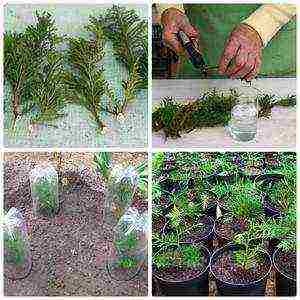 It is necessary to assess the condition of the seedling. Its branches must be strong and resist physical impact. The color of the needles should be saturated. The needles should not be dull or crumble.
It is necessary to assess the condition of the seedling. Its branches must be strong and resist physical impact. The color of the needles should be saturated. The needles should not be dull or crumble.- You should pay close attention to the earthen room. It should be large and cover all the roots of the plant.
- It is advisable to gain access to the root system of the seedling in order to assess its condition. All roots should be healthy and white or yellowish in color. If you scratch them, then juice should immediately appear on the surface.
- Decide on a plant variety. The color of the needles, the type of crown, resistance to cold depends on it.
Varietal variety of thuja
5 types of thuja grow in nature:
- Japanese.
- Korean.
- Folded.
- Eastern.
- Western.
The western thuja is in the greatest demand among gardeners and landscape designers. The fact is that this species has a pyramidal crown with diameters up to 5 m. It fits very well into any landscape design of the site. In addition, this type of thuja perfectly tolerates cold and therefore is excellent for growing in our climatic conditions.
To date, breeders have bred many varieties of this type of thuja. The most popular are the following:
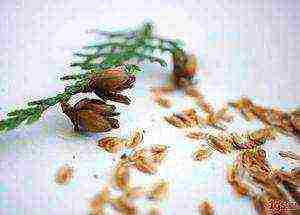 Brabant. This variety is distinguished by very fast growth and a small crown: only 1.5 m. The color of the needles is green in summer and brown in winter.
Brabant. This variety is distinguished by very fast growth and a small crown: only 1.5 m. The color of the needles is green in summer and brown in winter.- Emerald. This is a fairly tall tree. This variety can reach a height of 4.5 meters. His crown is classic - conical. This thuja is distinguished by its slow growth and good tolerance of the haircut.
- Columna. This is another fast growing variety. He has a very dense crown. This variety of thuja should be grown in shaded areas of the garden.
- Wagneri. This variety of thuja has a characteristic gray-colored needles. In winter, the color changes and becomes close to copper. Growing thuja Wagneri requires fertile soils and open areas.
- Globoza. This thuja grows slowly and has an uncharacteristic crown for its species. This plant has a round shape. Globoza is not afraid of drought and cold weather.
- Danica. This is not a tree, but a bush. It barely reaches 60 cm in height. It grows very slowly. Due to its amazing resistance to drought, frost and shade, it is one of the best gardening solutions.
- Golden Globe. The thuja of this variety has golden-green needles. The plant grows very slowly, which is why it is best used in rock gardens or for arranging low curbs.
Planting thuja
 For the first planting, it is best to use seedlings, bought in the nursery... In the future, you will not have to buy them, since thuja can be propagated in various ways, which will be described below.
For the first planting, it is best to use seedlings, bought in the nursery... In the future, you will not have to buy them, since thuja can be propagated in various ways, which will be described below.
Thuja can be grown both in the sun and in partial shade. But in the shade, this plant should not be planted. The fact is that the crown will thin out from the lack of sunny color. In addition, when planting, remember that this plant does not like excess moisture. Therefore, if the groundwater on the site is located close to the surface, then full drainage will have to be done.
As for the soil, then this plant survives well on any soil, but feels best in black soil. It is also not recommended to plant it on clay soils. There he may develop root rot.
If there is no black soil on the site, it is recommended to enrich the soil with humus, compost and peat before planting. The latter is necessary for better air permeability of the soil. On acidic soils, a preliminary application of lime or ordinary ash is recommended.
The process of planting a seedling is as follows:
 A landing hole is being prepared with a depth of no more than 80 cm and a diameter of up to 100 cm.
A landing hole is being prepared with a depth of no more than 80 cm and a diameter of up to 100 cm.- A drainage layer of crushed stone and expanded clay is laid at the bottom of the hole.
- On top of the drainage, soil is poured, mixed with complex fertilizers and a couple of glasses of ash.
- The seedling should be placed in the hole so that the root collar remains above the soil surface.
- Further? the hole should be completely filled up, and the soil should be tamped.
When planting several seedlings, a distance of at least 5 meters must be maintained between them. If a hedge is formed from seedlings, then the distance should be 1 m.
Thuja: growing from seed
Growing thuja from seeds at home - a very profitable occupation in all respects. First, a large number of seedlings can be grown at one time. Secondly, you don't have to pay for the seedlings. Thirdly, all the seedlings will be the same age and size. This option is perfect for those who have plans to create a hedge on the site. Finally, one should not forget that a plant grown from seed takes root better in a specific area.
There are a couple of disadvantages in growing thuja in such ways:
- Saplings grow for a long time. It can take 5 years from sowing to transferring a seedling into the ground.
- Despite the same appearance, seedlings can be very different from their parent trees. This is due to the possible loss of varietal characteristics.
Seed preparation
 If the gardener decides to propagate this plant by seeds, then he needs to properly prepare the planting material. The collection of the latter should begin in early autumn. To do this, you need to select ripe buds. You can recognize them by their brown color.
If the gardener decides to propagate this plant by seeds, then he needs to properly prepare the planting material. The collection of the latter should begin in early autumn. To do this, you need to select ripe buds. You can recognize them by their brown color.
The collected buds are dried at home for several days until they are fully disclosed. After that, seeds are extracted from them by light tapping. Ripe seeds will fall out easily. Only those seeds that are dark brown should be selected.
After collecting the seeds, you can begin to stratify them. To do this, they need to be wrapped in a cloth and buried in damp soil. From above, the soil can be covered with fallen leaves or a piece of insulation can be put. In this state, the seeds are left for the winter.
After wintering seed material is removed from the ground and poured into a previously prepared container with dry sand. The latter, along with the seeds, must be placed in the refrigerator for 2 months.
By the end of the above period, you need to prepare the soil for planting seeds. They take root best of all in a mixture of turf soil, sand peat.
Sowing thuja seeds
Planting seeds is best at home.... For this, wooden boxes are prepared, on the bottom of which a drainage layer 2 cm thick is poured. A nutrient mixture is poured onto the drainage. All this is well compacted. Then, furrows are made in the soil mixture into which the seeds are sown. The distance between them should not be less than 6 cm. After that, the seeds should be sprinkled on top with a mixture of peat and sand and watered with a spray bottle.
The box with the planted seed should be covered with foil and placed in a warm place until the first shoots appear. At the same time, one must not forget to moisten the soil with a spray bottle every day. It is better not to use direct watering, as this can lead to erosion of the soil mixture and exposing the seeds.
After the first shoots appear the film is removed from the boxes. The boxes themselves should be moved to a cool place and provided with adequate lighting. It remains only to observe the seedlings and get rid of dead plants in time.
Seedling care at home
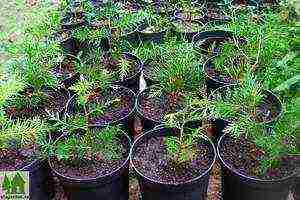 First of all, their strong growth should not be allowed. With a strong thickening of seedlings, they develop poorly. If young plants still grow strongly, then they are not cut off, but planted. When there is no thickening, then it is better not to replant the seedlings within 1 year.
First of all, their strong growth should not be allowed. With a strong thickening of seedlings, they develop poorly. If young plants still grow strongly, then they are not cut off, but planted. When there is no thickening, then it is better not to replant the seedlings within 1 year.
At the 2nd year of life grown seedlings, in any case, will have to be transplanted into separate pots, which should then be transferred from home conditions to outdoor ones.This is necessary for better adaptation of plants to the climate. For the winter, it is better to return the plants to the house.
In the fall of the 3rd year of life the seedlings are ready to be transplanted to a permanent location.
In summer, pots with seedlings should be in partial shade at a temperature of 17 to 23 ° C. For the winter, plants should be placed in a room with a temperature regime of 15 to 18 ° C.
After planting seedlings in open ground for the first 2 years of free life, they will have to be reliably covered for the winter.
Seedlings in the first years of life do not tolerate direct sunlight. Therefore, you need to protect them from such an impact. Experts advise keeping boxes and pots of seedlings on the window sills facing the west or north side.
Seedlings should be fed regularly. As fertilizers, you need to use those mixtures that contain potassium, phosphorus and nitrogen. It is also useful to add compounds with boron and manganese to the soil.
Top dressing should be given 2 times a month.
Thuja: propagation by cuttings
 You can grow thuja not only from seeds, but also from cuttings... The latter are harvested from the upper parts of the axial shoots. This allows the branching characteristic of the parent to be preserved in the daughter plant. It is better not to use side branches for grafting, as they will form a creeping thuja form.
You can grow thuja not only from seeds, but also from cuttings... The latter are harvested from the upper parts of the axial shoots. This allows the branching characteristic of the parent to be preserved in the daughter plant. It is better not to use side branches for grafting, as they will form a creeping thuja form.
When harvesting cuttings, you do not need to cut them off. It is better to tear off the planting material from the main branch along with the bark. After that, using a sharp knife, you need to clean the ends of the cuttings.
The timing of growing thuja from cuttings depends on the maturity and health of the branches that were used to obtain the cuttings. The younger they are, the faster the cuttings take root.
For better survival of planting material in recent years, gardeners are increasingly using growth substances, for example, organic acids... Their use allows to increase the survival rate of seedlings.
If a gardener plans to germinate cuttings in a greenhouse, then it is best to harvest them in April. In this case, at least 75% of all seedlings survive. When rooting cuttings at home, they should be planted in pots filled with quartz sand. Sprinkle it on top with a thin layer of peat.
Cuttings should be planted to a depth of no more than 3 cm.... After planting, the pots should stand in a room with an air temperature of no more than 8 ° C.
It takes a year for the full-fledged rooting of cuttings. That is, next spring they can already be placed in open ground. However, before that, they must stand in a greenhouse for 3 weeks.
Fertilizers for growing thuja
For this plant to grow properly, it needs to be fertilized regularly. For this purpose, it is best to use the following types of fertilizers:
- Organic. It is used in cases where it is required to improve the general agricultural background. Organic fertilizers include: manure, peat, compost.
- Mineral fertilizers. First of all, we are talking about mineral complexes containing potassium, phosphorus and nitrogen. Without them, the normal cultivation of thuja in the northwestern and northern regions of our country can hardly be called effective.
- Microfertilizers. They contain trace elements such as manganese, molybdenum, zinc, cobalt, etc.
Conclusion
Growing thuja - this is not an easy, but very exciting process. Yes, it will take more than one year to grow an adult plant, but real gardeners will not be afraid of any difficulties.
>


